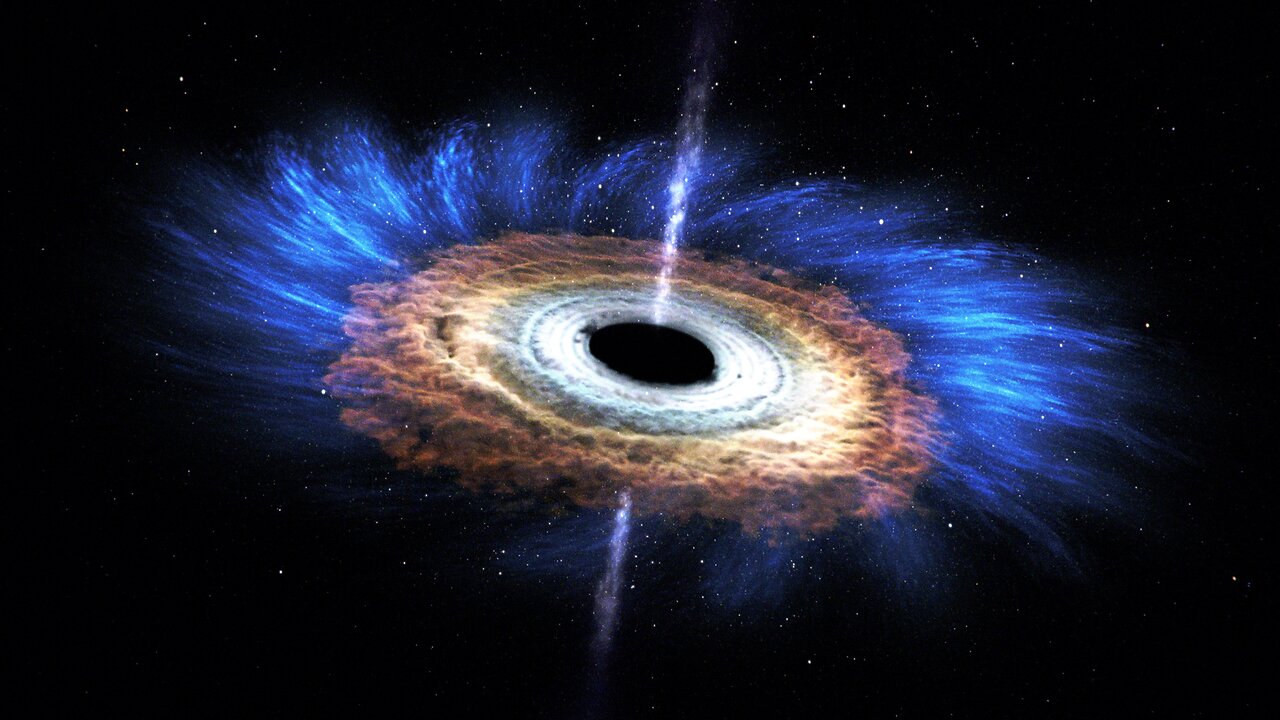Premium Only Content

Cosmic Drama Unveiled: When Black Holes Shred Stars
In this visual representation, we explore a remarkable cosmic phenomenon: when a star ventures too close to a black hole, the gravitational forces at play are so powerful that they tear the star apart. This extraordinary event, known as a "tidal disruption," unfolds in a dramatic manner. As the star gets too close to the black hole, it undergoes a process where some of its shattered remains are catapulted outward at incredibly high speeds, while the rest gets inexorably drawn towards the insatiable gravitational pull of the black hole. This dynamic interaction results in a unique X-ray flare that can persist for several years.
To unravel the mysteries surrounding such events, NASA's Chandra X-ray Observatory, the Swift Gamma-ray Burst Explorer, and ESA/NASA's XMM-Newton spacecraft have come together, each contributing essential pieces to the cosmic puzzle. Their combined efforts shed light on a particular tidal disruption event called ASASSN-14li. This event was initially discovered through an optical survey conducted by the All-Sky Automated Survey for Supernovae (ASAS-SN) back in November 2014. ASASSN-14li unfolded in the vicinity of a supermassive black hole, which is estimated to possess a mass several million times greater than that of our Sun. This cosmic drama played out within the heart of PGC 043234, a distant galaxy located approximately 290 million light-years away.
Astronomers are eagerly searching for more occurrences akin to ASASSN-14li. These events serve as critical testing grounds for theoretical models, allowing scientists to gain deeper insights into how black holes influence their surrounding environments.
During the course of a tidal disruption event, slender strands containing a significant portion of the star's mass plunge toward the black hole. Over time, these gaseous strands converge into a seamless, scorching-hot disk that radiates with intense X-rays. As this disk takes shape, its central region becomes extraordinarily heated, leading to the emergence of a powerful outflow of material known as a "wind," which streams away from the disk.
Credits
NASA's Goddard Space Flight Center.
Brian Monroe (USRA): Lead Animator
Scott Wiessinger (USRA): Lead Producer
Francis Reddy (Syneren Technologies): Lead Writer
Jon Miller (University of Michigan): Lead Scientist
-
 2:03:42
2:03:42
The Connect: With Johnny Mitchell
1 day ago $16.78 earnedAmerican Vigilante Reveals How He Went To WAR Against The WORST Cartels In Mexico
93.3K7 -
 LIVE
LIVE
a12cat34dog
1 hour agoONE OF THE BEST REMAKES EVER :: Resident Evil 4 (2023) :: I GOT 100% ON EVERYTHING {18+}
178 watching -
 19:31
19:31
Liberty Hangout
3 days agoAnti-Trumpers Repeat CNN Talking Points
185K215 -
 19:53
19:53
Clintonjaws
3 hours ago $0.77 earnedThey Lied About Charlie Kirk - MAJOR UPDATE
5.74K9 -
 LIVE
LIVE
Midnight In The Mountains™
42 minutes agoArc Raiders w/ The Midnights | THE BEST LOOT RUNS HERE
100 watching -
 LIVE
LIVE
ladyskunk
1 hour agoBorderlands 4 with Sharowen Gaming, Rance, and Sweets! - Part 8
56 watching -
 LIVE
LIVE
S0lidJ
2 hours ago🟢Live -S0lidJ - Solos Arc Raiders
113 watching -
 5:46:19
5:46:19
TheItalianCEO
6 hours agoSunday is for chill games
8.6K -
 10:24
10:24
AlaskanBallistics
18 hours agoDiscovery Optics 1-8x28mm LPVO Riflescope Review
8.78K -
 2:08:24
2:08:24
Jeff Ahern
4 hours ago $7.20 earnedThe Sunday Show with Jeff Ahern
18.9K6